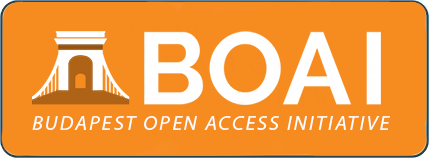Islamic Finance in China: Current Landscape and Future Forward
DOI:
https://doi.org/10.33102/jmifr.v19i2.464Keywords:
China, factor analysis, Islamic finance, Muslim, perceptionAbstract
China’s foreign trade has gradually lost its advantage due to continuous rise of RMB exchange rate and the labor costs in recent years. China urgently needs to explore new international trade markets to reinvigorate its foreign trade. With the recent development strategy of “One Belt One Road”, China should seize this opportunity to develop Islamic finance since most countries along the routes are Islamic countries. Islamic finance differs from traditional finance in its principles, development, products, operations, and regulation. The purpose of this article is to examine Chinese views on Islamic finance. The study conducted a survey through questionnaire. The findings show that the most ideal area to develop Islamic finance is in China’s northwest region due to its cultural advantages. The survey records that respondents’ reluctance towards Islamic finance mainly due to the absence of legal system and financial regulations for Islamic finance in China. Moreover, lack of talents in Islamic finance is also a major concern based on the survey. The study believes that the development of Islamic finance is conducive to the sound development of China’s financial system. It strengthens economic and trade cooperation with the Islamic world, enhances the ability to attract investment, and promotes harmonious economic development of ethnic minority areas.
Downloads
References
Ali, M., & Puah, C. H. (2017). Acceptance of Islamic banking as innovation: A case of Pakistan. Middle East Insights, 33(2), 499-516. https://doi.org/10.1108/H-11-2016-0085
Ariffin, N. M. (2012). Liquidity risk management and financial performance in Malaysia: Empirical evidence from Islamic banks. Aceh International Journal of Social Sciences, 1(2), 77-84. https://doi.org/10.12345/aijss.1.2.1530
Asadullah, M. N. (2016). Trust, trustworthiness, and traditional Islamic education. Oxford Development Studies, 44(2), 152-166. https://doi.org/10.1080/13600818.2015.1104294
Ashraf, S., Robson, J. & Sekhon, Y. (2015). Consumer trust and confidence in the compliance of Islamic banks. Journal of Finance and Service Marketing, 20, 133–144. http://dx.doi.org/10.1057/fsm.2015.8
Asutay, M. (2013). Islamic moral economy as the foundation of Islamic finance. In Islamic Finance in Europe. Edward Elgar Publishing.
Ayub, M. (2020). Concept of materiality for financial reporting in Islamic financial institutions: An Islamic perspective. Journal of Islamic Finance Accountancy, 4(1), 10. http://ww4.ticaret.edu.tr/islamekonomisi/wp-content/uploads/sites/59/2020/02/JOIFA-4th-Issue-2020-final-to-web.pdf
Aziz, H. A., Echchabi, A., & Ayedh, A. M. (2015). Current state and future prospects of Islamic banking in Morocco: An empirical investigation. Journal of Emerging Economies and Islamic Research, 3(2), 1–10. https://doi.org/10.24191/jeeir.v3i2.9055
Bellalah, M. (Ed.). (2013). Islamic banking and finance. Cambridge Scholars Publishing.
Belouafi, A., & Belabes, A. (2010). Islamic finance in Europe: The regulatory challenge. Islamic Economic Studies, 17(2).
Caudevilla, O. (2018, December 14), HK should aim to be a hub for Islamic finance. China Daily. https://www.chinadailyhk.com/articles/132/121/212/1544758823891.html
Djafri, D., Laldin, M. A., & Laallam, A. (2021). The global perspective of Islamic finance and the potential for China to tap into the Islamic finance market. Journal of Islamic Business and Management, 11(01), 14-28. https://doi.org/10.26501/jibm/2021.1101-002
Echchabi, A., Omar, M. M. S., Ayedh, A. M, & Sibanda, W. (2021). Islamic banks financing of fintech start-ups in Oman: An exploratory study. The Journal of Muamalat and Islamic Finance Research, 18(1), 55-65. https://doi.org/10.33102/jmifr.v18i1.329
Erol, C., & El-Bdour, R. (1989). Attitudes, behaviour, and patronage factors of bank customers towards Islamic banks. International Journal of Bank Marketing, 7(6), 31-37. https://doi.org/10.1108/02652328910132060
Frankfort-Nachmias, C., & Nachmias, D. (1996). Research methods in the social sciences (5th ed.). Arnold, London.
Hassan, M. K., & Kayed, R. N. (2009). The global financial crisis, risk management and social justice in Islamic finance. Risk Management and Social Justice in Islamic Finance. https://citeseerx.ist.psu.edu/viewdoc/download?doi=10.1.1.461.7448&rep=rep1&type=pdf
Jeong, J. (2015). Ethnic minorities in China's western development plan. Journal of International and Area Studies, 22(1), 1-18. http://www.jstor.org/stable/43490277
Kenton, W. (2021, February 15). Islamic Financial Services Board (IFSB). https://www.investopedia.com/terms/i/ifsb.asp
Latip, M., Yahya, M. H., Junaina, M. (2017). Factors influencing customer’s acceptance of Islamic banking products and services. Journal of Islamic Economics and Business, 2(1), 1-18. http://dx.doi.org/10.24042/febi.v2i1.681
Li C. (2015). Overview of Islamic finance development’, foreign trade, no. 06, pp. 105–106. https://www.imf.org/external/pubs/ft/wp/2015/wp15120.pdf
Li, F. (2018). The role of Islam in the development of the “belt and road” initiative". Asian Journal of Middle Eastern and Islamic Studies, 12(1), 35–45. https://doi.org/10.1080/25765949.2018.1439617
Li, W., & Jin, D. (2018). On the design of financial products along OBOR. The Journal of Finance and Data Science, 4(2), 55-70. https://doi.org/10.1016/j.jfds.2017.10.001
Lin, J. (2006). Review of Islamic banking & finance in South-East Asia: Its development and future. Asian Journal of Comparative Law, 1(1), 1-4. http://dx.doi.org/10.1355/AE24-3F
Ma, J. (2012). The development of Islamic finance and its combination with China’s financial market. Gansu Finance, 7, 45-48.
Metawa, S. A., & Almossawi, M. (1998). Banking behavior of Islamic bank customers: Perspectives and implications. International Journal of Bank Marketing, 16(7), 299‐313. https://doi.org/10.1108/02652329810246028
Mohamad, S. & Sori Z. M. (2016). Effectiveness of Shariah committees in the Malaysian Islamic financial institutions: The practical perspective. Middle East Insights, 1-8. http://dx.doi.org/10.23976/ifs.2016002
Mohamed, H. (2012). Risk management in Islamic banks (MPRA Paper No. 38706). ESLSCA Business School.
Qiang, Q. (2008). Recent Development of Islamic Finance [J]. Studies of International Finance, 11.
Rogers, E. M. (2003). Diffusion of Innovation. Free Press.
Safari, M. (2011, March). Are sukuk securities the same as conventional bonds? In Proceedings of Foundation of Islamic Finance Series, Second Conference, Kuala Lumpur, Malaysia.
Song, C. (2022, February 22). Muslims in China. China Highlights. https://www.chinahighlights.com/travelguide/muslim-china/
Sui, P. (2011). The choice of financial system in Xinjiang and other western regions of China. Journal of Wuling, 36, 62-66.
Tabachnick, B. G., & Fidell, L. S. (2001). Using multivariate statistics (4th ed.). HarperCollins.
Tianyao, K. (2019). The rise of Islamic finance on China's belt and road. International Islamic University Malaysia. https://www.researchgate.net/publication/335855723_The_Rise_of_Islamic_Finance_on_China%27s_Belt_and_Road
Xinhua. (2015, March 28). China unveils action plan on belt and road initiative. Chinadaily. https://cutt.ly/oQD9IuY
Xu, T., & Ouyang, Y. (2011). Research on the combination of Islamic finance and the financial market in China. China Market, 39, 46-49.
Yahya, M. H., Muhammad J., Abdullah, A., & Nasir, A. M. (2013). Chinks in the capitalism system – the pertinence of Islamic finance. Journal of International Business and Cultural Studies, 7, 1-16. https://www.aabri.com/manuscripts/121358.pdf
Yannopoulou, N., Koronis, E. & Elliott, R. (2011). Media amplification of a brand crisis and its affect on brand trust. Journal of Marketing Management, 27(5-6), 530–546. http://dx.doi.org/10.1080/0267257X.2010.498141
Yingmei, J. (2014). Globalization of Islamic finance and its development trends in China. West Asia and Africa, 2.
Yiu, E. (2015, May 28). Hong Kong government sells second Islamic sukuk bond to raise US$1.1 billion. Soth China Morning Post. https://www.scmp.com/business/markets/article/1811139/hong-kong-government-sells-second-islamic-sukuk-bond-raise-us11
Yu, H. (2017). Motivation behind China’s ‘one belt, one road’ initiatives and establishment of the Asian infrastructure investment bank. Journal of Contemporary China, 26(105), 353-368. https://doi.org/10.1080/10670564.2016.1245894
Yusof, M. Y. R. (1999). Islamic banking: Adoption of a service innovation [Master’s thesis] Nanyang Technological University.
















